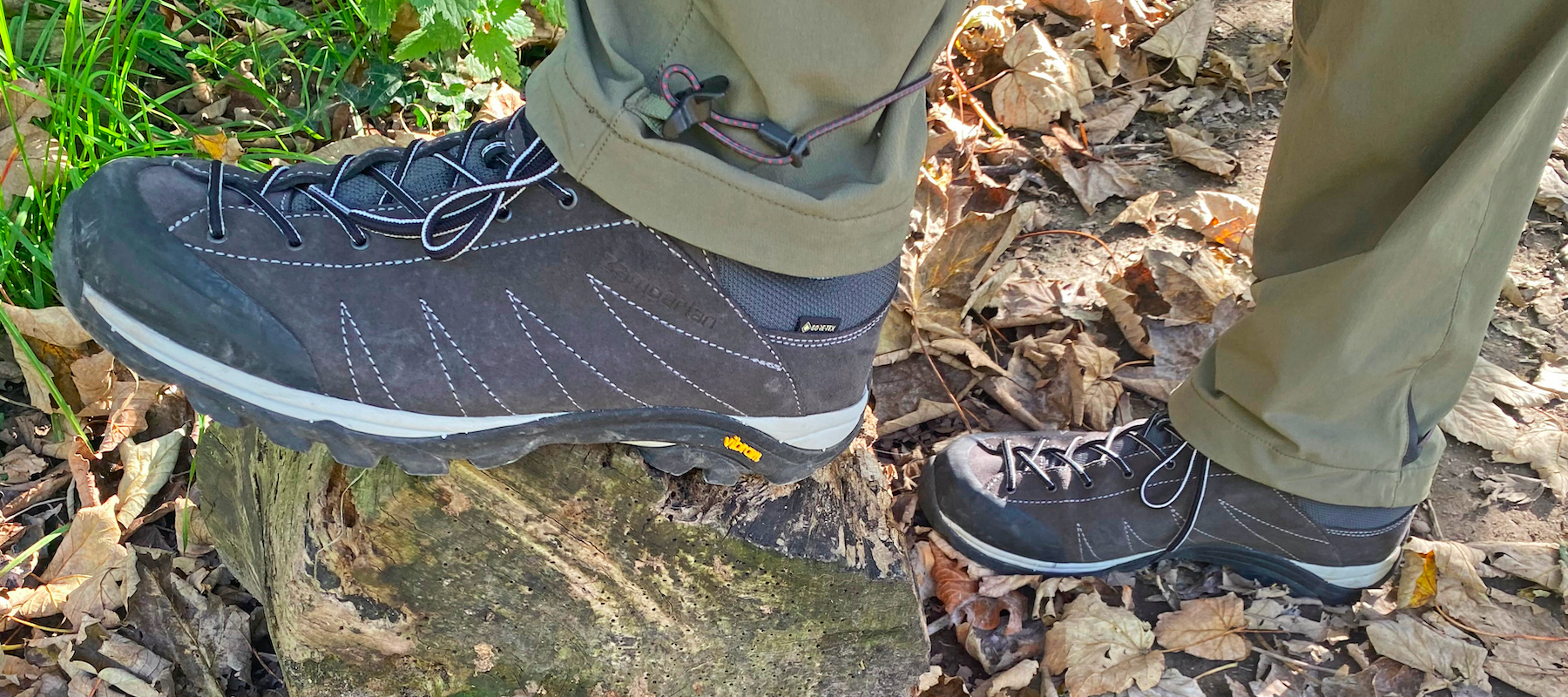Advnture Verdict
With excellent waterproofing, brilliant breathability and sky-high comfort ratings, Zamberlan’s Hike Lite GTX shoes are superb for all-year-round walking escapades. But, with great grip and some degree of rigidity (balanced with enough flex to facilitate some tactile scrambling and climbing), these supremely versatile outdoor hooves are also ideal for most approach hikes, scrambling shenanigans and via ferrata forays on technical terrain.
Pros
- +
Waterproof and breathable
- +
Super comfortable
- +
High-quality materials
- +
Versatile – good for hiking, approach and scrambling
- +
Long lace setup for secure fit
Cons
- -
Some scramblers and peak baggers might prefer more rigidity
- -
Some material maintenance required
- -
No choice of colors
- -
No recycled content
- -
Animal products used
You can trust Advnture
Zamberlan Hike Lite GTX RR hiking shoes: first impressions
Carefully crafted by Italian mountain and outdoor footwear artisans, Zamberlan Hike Lite GTX RR hiking shoes are incredibly comfortable as soon as you liberate them from their box and stick them on over your socks. The hydrobloc suede upper is luxuriously soft, and requires no breaking in at all.
• List price: $150 (US) / £140 (UK) / €135.15 (EU)
• Weight (per shoe): Men’s: 13.5oz / 385g; Women’s: 12oz / 340g
• Gender specificity: Men’s / Women’s
• Materials: Hydrobloc suede upper, Gore-Tex lining, EVA wedge midsole, Vibram Pillow outsole
• Colors: Men’s: Graphite; Women’s: Lite Gray
• Best for: Hill walking, hiking, trekking, approach, scrambling, via ferrata
And there’s plenty of flex across the length of the shoe – too much, perhaps, for them to qualify as a true approach shoe, which is what they look like, with the design including a long lace system reminiscent of a climbing hoof’s.
But, as the name suggests, the Hike Lite GTX don’t claim to be anything more than a walking shoe, and with a Gore-Tex membrane, an EVA midsole, a Vibram outsole and all the know-how, credibility and expertise of the Zamberlan brand behind them, I knew they had the potential to be one of the best hiking shoes out there.
Still, after hiking many miles in these very versatile shoes, I was convinced they could also be used for approach missions, as well as rock scrambling escapades and via ferrata forays, so I decided to put them to the test on some more vertiginous adventures too.
Zamberlan Hike Lite GTX RR hiking shoes: on the trails
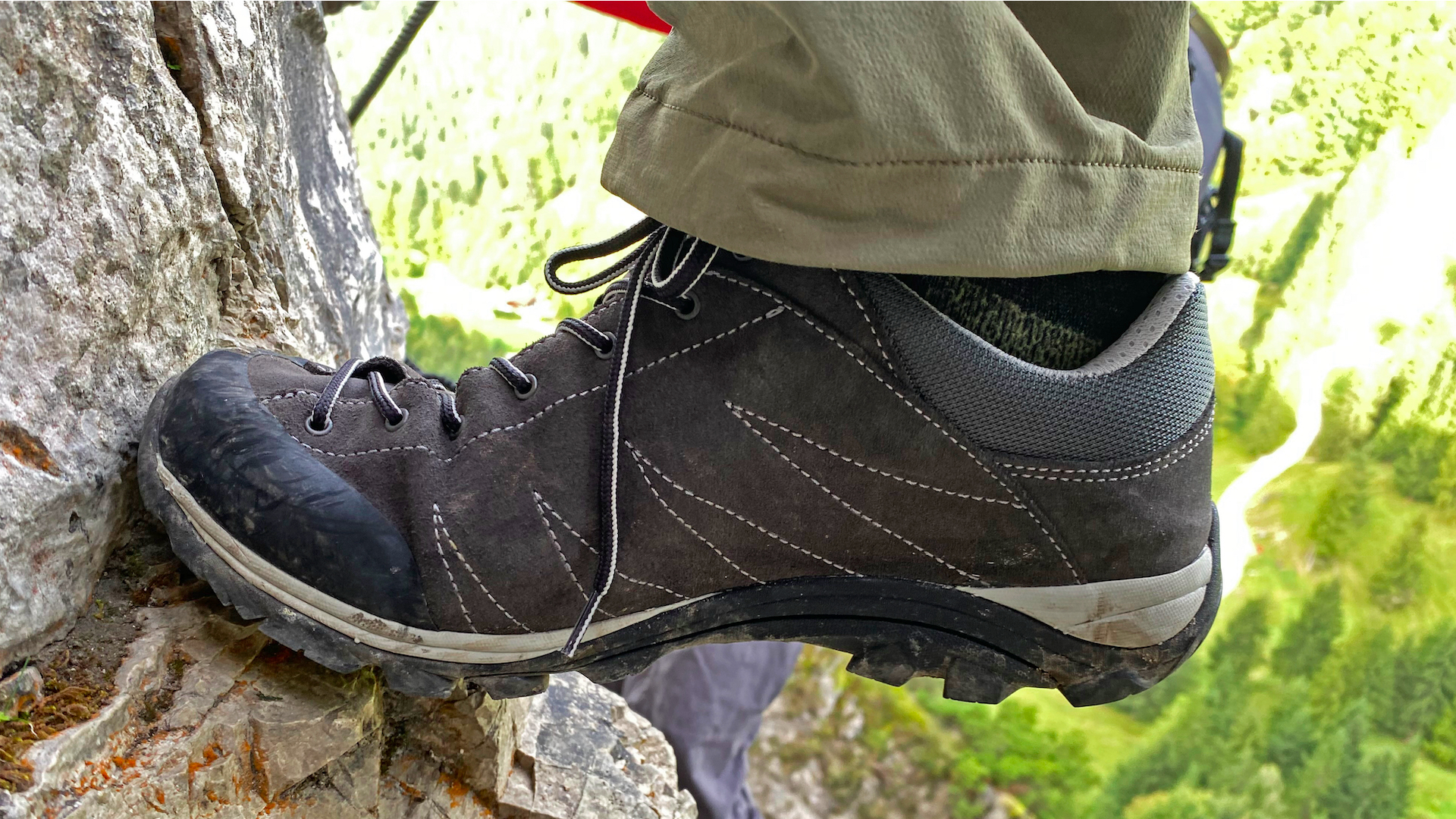
Over the last 18 months, I’ve been wearing Zamberlan Hike Lite GTX shoes while walking trails across various parts of the South West, including on Dartmoor and Exmoor. More recently I also put them to the test during a trek and a via ferrata climb in the Tyrol region of Austria, hiking out of Walchsee into the Chiemgauer Alpen and ascending to the top of Harauer Spitze.
Hiking across varied terrain in all sorts of conditions, I’ve found this model to be an ideal four-season walking shoe. Backed by a Gore-Tex membrane that supplies reliable and breathable waterproof protection, the versatile Hike Lites are excellent for trekking regardless of how hot it is or how wet the weather gets.
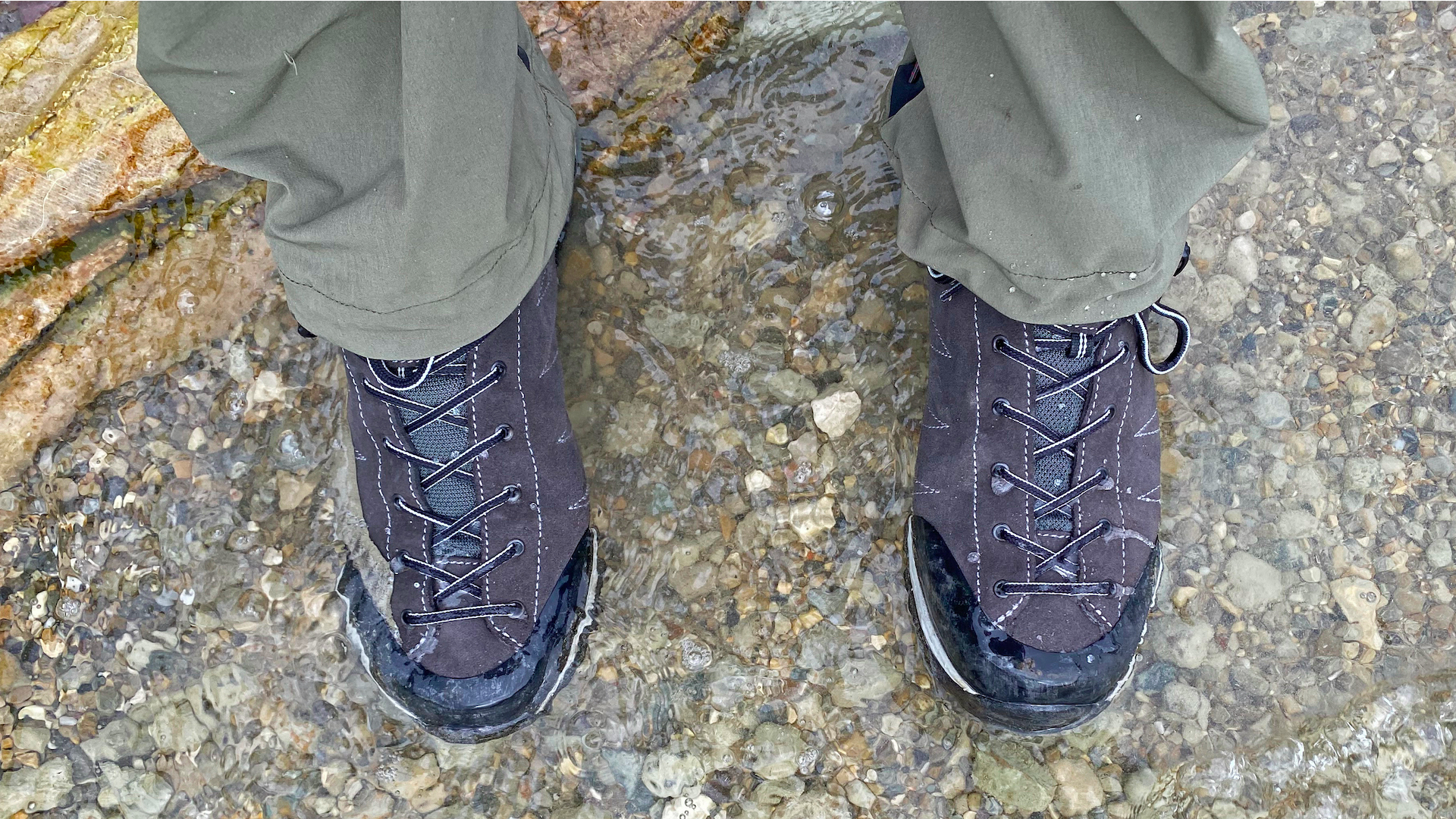
The long lace system adds extra locked-in security to the confidence-inspiring close-fit feel. This shoe also boasts an EVA midsole that supplies a good degree of cushioning, plus a top-quality Vibram outsole. The lugs aren’t especially aggressive, but they supply traction and braking where required, and don’t collect too much muck in wet and muddy conditions. During testing on a range of rocks and various types of trails, I found that these shoes supplied impressive levels of grip combined with a good amount of feedback from the terrain I was tackling.
I did start to fret before the via ferrata climb that these shoes wouldn’t have enough rigidity along their length to suit the adventure I was about to undertake. In the end I needn’t have worried, because the Hike Lites were perfect for setting off along the “iron roads” that Austro-Hungarian and Italian soldiers famously used to travel through the mountains and fight on the bitter alpine frontline that opened up during WWI.
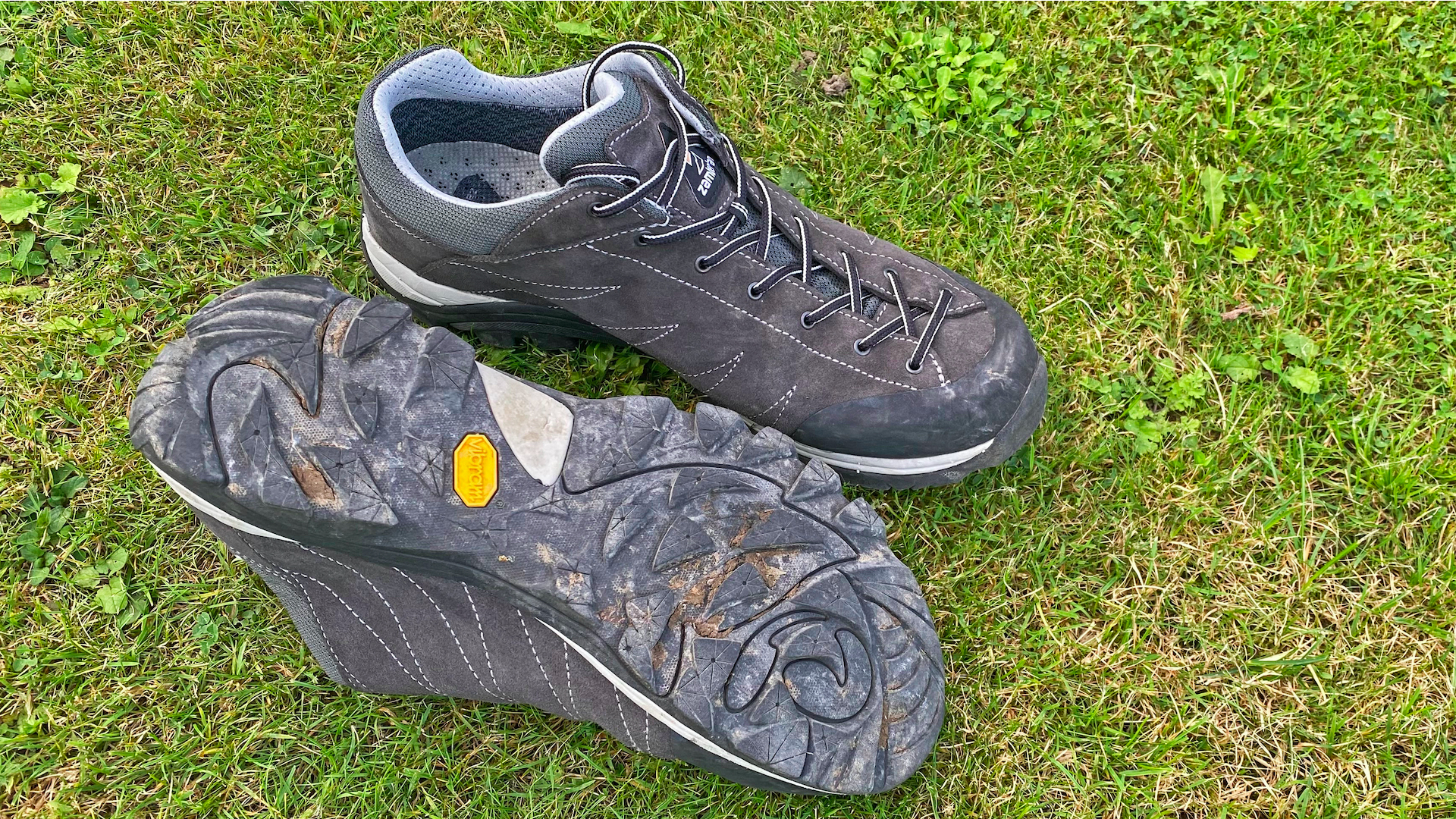
They offered enough stiffness across the sole to support my weight without it becoming exhausting or uncomfortable, even during a climb that lasted for a few hours, while the supple upper felt good when I needed to place my foot in tighter, natural holds. The long lacing system made the shoes feel properly locked on to my feet, which is exactly what you need to feel when you’re dangling over a 75m drop.
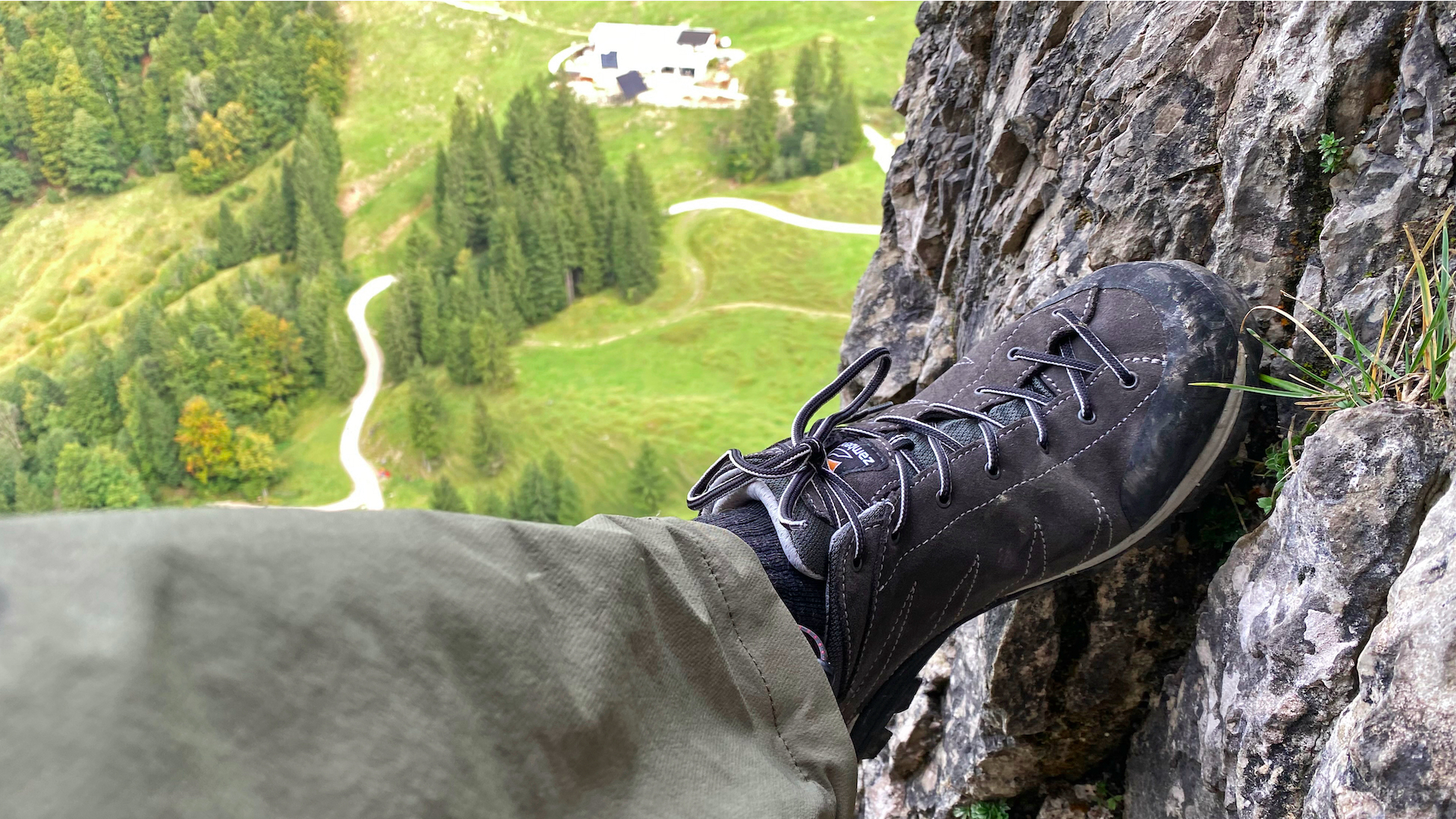
Some people might prefer a little more stiffness for edging around rocks on technical ascents, but I like the tactile feel of these shoes and I think the balance between rigidity and flex is pretty much spot on for the vast majority of non-roped mountain missions, while keeping comfort levels good for less vertiginous, sub-alpine hiking activities.
Overall I think these versatile all-round outdoor adventure shoes are an excellent choice for those who like to hike in all four seasons and enjoy a mix of outdoor pursuits in between treks and walks.

Author of Caving, Canyoning, Coasteering…, a recently released book about all kinds of outdoor adventures around Britain, Pat has spent 20 years pursuing stories involving boots, bikes, boats, beers and bruises. En route he’s canoed Canada’s Yukon River, climbed Mont Blanc and Kilimanjaro, skied and mountain biked through the Norwegian Alps, run an ultra across the roof of Mauritius, and set short-lived records for trail-running Australia’s highest peaks and New Zealand’s Great Walks. He’s authored walking guides to Devon and Dorset, and once wrote a whole book about Toilets for Lonely Planet. Follow Pat’s escapades on Strava here and Instagram here.
